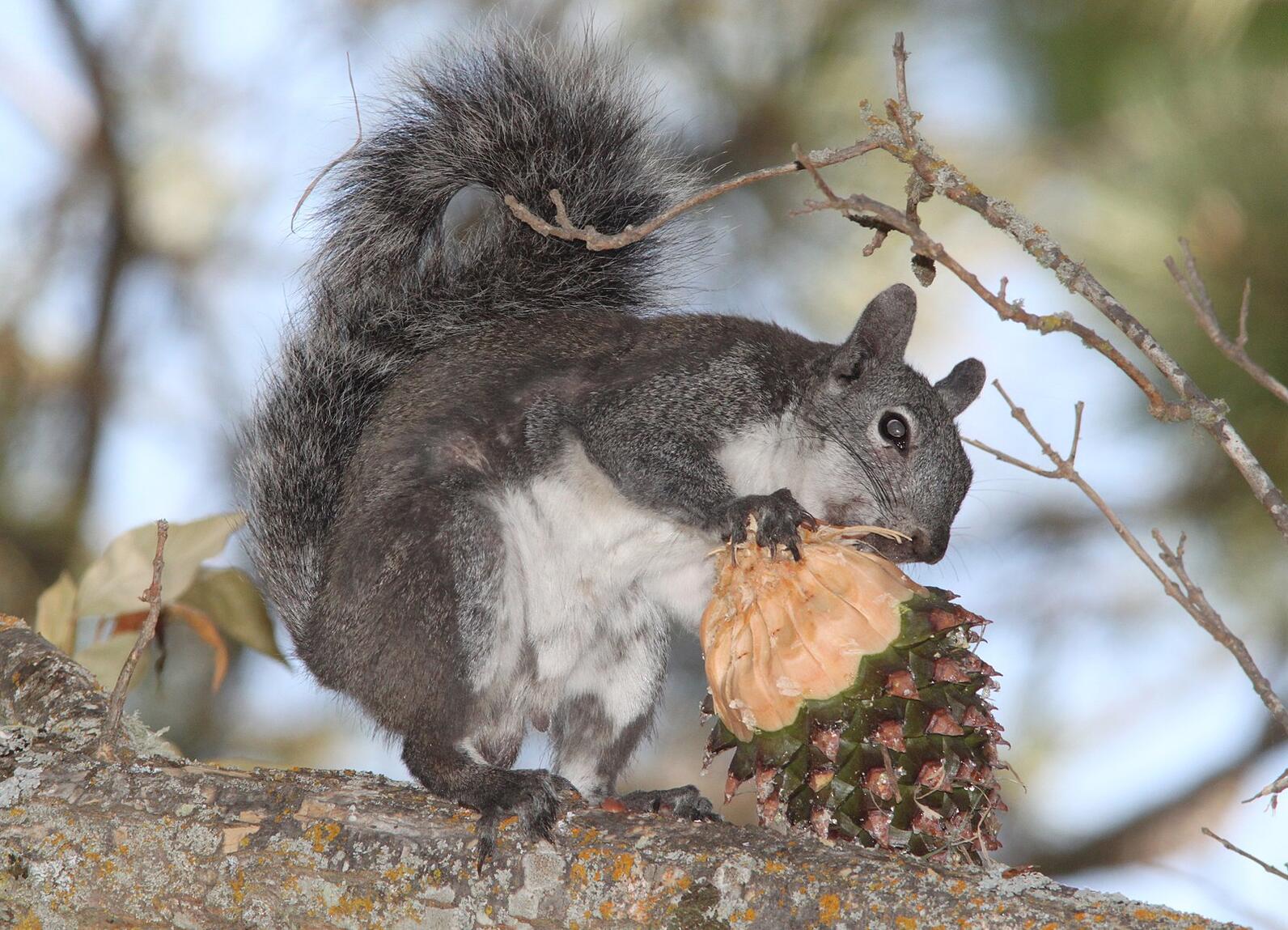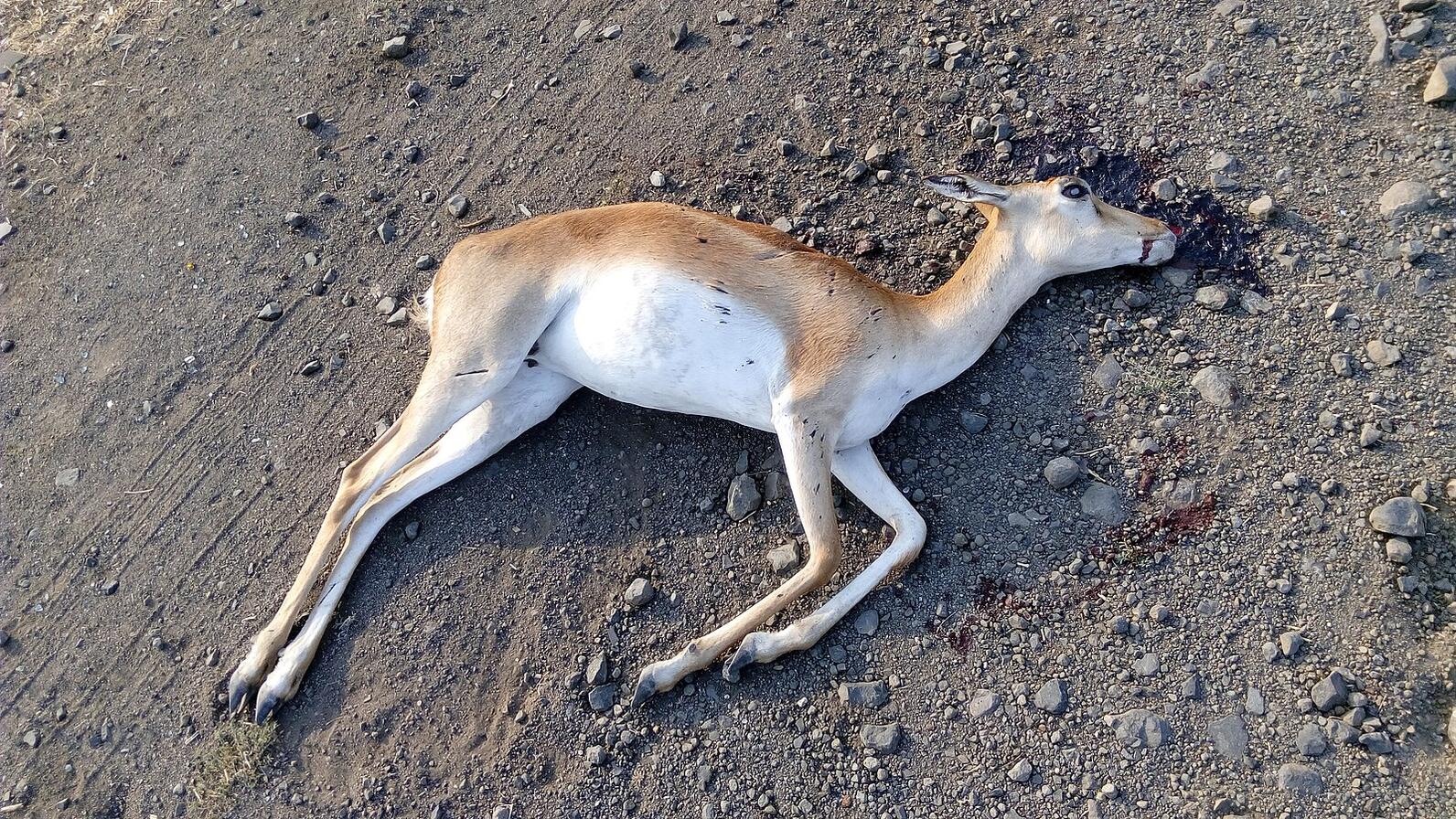Animals across the world are being forced to change for the worse, and it’s all because of us.
According to the International Union for Conservation of Nature, across all currently living species, a little more than a quarter of them are in danger of extinction. Of those endangered species, 99% of them are endangered because of human activity.
Human activity has caused a plethora of negative impacts on ecosystems across the globe. The effects range from rapidly increasing global temperatures to entire forests being converted to farmland. Although these actions may also affect us, all of them are much more devastating to animals as they lose more and more of their homes.
Take the Western gray squirrel, for example: it is a California native species and has existed there for centuries (their first documentation was in 1818 by American zoologist George Ord Jr.). They thrive on the upper West Coast through the Pacific Northwest where forests are dense and the seeds they rely on for food are abundant.

Western grays are a shy species, typically steering clear of humans and loud noises. They spend the day foraging and exploring throughout their territory, which could span from 0.5–7 hectares in size.
As humans destroyed more and more forests in the name of development, the squirrels were forced to move further towards the hills. Humans aren’t the only creatures forcing the Western gray squirrels away from their habitats, though.
Enter the Eastern gray squirrel and the Eastern fox squirrel. They are non-native species introduced to California in the early 1900s by people. After their arrival on the West Coast, they started to outcompete the native Western grays by taking more resources and shelter. Both of these issues caused Western gray squirrel populations to decrease, especially in urban and suburban areas.
WildCare is a wildlife rehabilitation facility that specializes in helping injured animals recuperate and preparing them for re-release. Alison Hermance, the Director of Communications and Marketing at WildCare, has been at the organization for multiple decades and witnessed Bay Area ecosystems change before her eyes.
“Any time you have disturbed habitat, like what people do… the introduced species are more likely to thrive than the native ones,” said Hermance.
The Western gray’s population has been waning in population, with Hermance noting, “Over my 20 years in WildCare, we almost never get Western grays anymore.” Despite this, the Western gray is not an endangered species.
However, many other species facing similar issues are now threatened with extinction. One such species is the axolotl, a charismatic amphibian that was endangered due to pollution, overfishing, and the introduction of invasive carp and tilapia into their habitat.
Habitat fragmentation is similar to habitat loss in many ways — both are similar because natural habitat is lost and used by humans, making these activities harmful to the animals and plants living in the region. The main difference is that fragmentation is specifically when parts of a habitat are separated because of human development.
The most common examples of fragmenting agents are highways and roads. They separate the area that they pass through into multiple parts, preventing animals from crossing without risk of injury or death.

Habitat fragmentation harms every species that lives in the area through increased risk of local extinction and lower genetic diversity in the populations. It especially harms migratory animals because it prevents them from migrating.
Some migratory animals travel hundreds or thousands of miles to find the resources they need to survive. The fragmentation of the land they are traveling through cuts off their journey and prevents them from successfully accessing those needed resources.
The destination ecosystem also relies on the migrating animals for ecosystem functions and additional resources. With migrations inhibited by human activity, both ecosystems and migratory animals become weaker.
These huge changes to the environment are causing extreme changes in certain animals’ behavior. Some examples include species leaving their historic habitats altogether, having lower reproduction rates from forced relocation, or not being able to access their typical breeding grounds.
Although these ecosystem-wide changes are harming animals, we as individuals are also negatively changing animals’ behaviors — even when we don’t mean to.
One major issue that we are causing is habituation, which is when animals become accustomed to humans through consistent exposure. This can be devastating to animals due largely to the unpredictability of humans: most of the time animals are unable to know whether a human is helpful or harmful. In the worst cases, animals might be harmed because they approached the wrong human at the wrong time.
“In every way, animals are way better off being scared of humans and being nervous about humans,” said Hermance. “Even the best-intentioned humans make really bad things happen to animals a lot.”
A very common example is feeding animals non-natural food. Introducing an easy food source, like an overflowing garbage can or humans with the propensity for hand-feeding, breadcrumbs may cause animals to become reliant on the food source. If and when that food source becomes unavailable, the animals suffer because they lack the food that they once heavily relied on and are unable to access anymore.
Many black bears in the Lake Tahoe area have become reliant on eating the garbage from humans because of its abundance and being an easy food source. The bears’ reliance on garbage leads them to get comfortable around human areas, which loften eads to them being euthanized at a certain point.
Bird feeders can be harmful when not properly maintained. If bird feeders are not cleaned or not properly kept, they may become breeding grounds for diseases like salmonella or avian flu, both being extremely harmful to birds and extremely transmissible through close contact. The current strain of avian flu specifically spreads through bird droppings, which can contaminate birdseed in dish feeders and is then eaten by other birds.
All of these environmental changes are forcing animals to alter their behaviors and natural patterns. Deviations from a balanced ecosystem can be extremely harmful to all species living in that environment. Although humans are undoubtedly contributing to many such changes, there are plenty of ways to minimize your impact. How can you individually help your local ecosystems?
- Make sure that you are planting only native plants
Planting native plants helps not only the environment but you as well. They require less water and fertilizer, meaning that you don’t need to spend as much time taking care of them. They are also able to store more carbon than non-native plants and can uphold the ecosystem as shelter and food sources for native species. - Be careful and mindful of your trash
Making sure that your trash is going into trash bins is important for the safety of animals. Improperly disposing of any trash could be harmful to animals; scavengers, like raccoons or bears, are liable to get stuck in the trash or accidentally consume lethal or poisonous substances. Improper disposal also pollutes the land and harms soil, waterways, and air. - Try not to use poisons or pesticides
Pesticides have been connected with declining populations in various animals like birds, bats, and even aquatic plants. Poisons can harm every animal in the food chain when used, especially when distributed improperly. - Keep control of your domestic animals
Domestic animals, when unchecked, can pose a serious threat to wildlife. Cats especially are prone to hunting small birds, reptiles, and amphibians, many of which have fragile populations. Wildlife can also harm domestic pets, so keeping them separate whenever possible helps protect them both. - Do not introduce non-native species to an ecosystem
As previously stated, the introduction of invasive species is often extremely harmful to native populations and the ecosystem. Make sure that you do not do this by accident by cleaning your boots and bags after hiking.
The most important part of conservation is consistency and accountability. Making sure that we hold ourselves accountable when we mess up is important to ensure that we don’t slip back into bad habits that harm the environment. Perhaps you could make a native plant garden or even commit to something small, like picking up 10 pieces of trash a day. Any action to help the environment is better than none.



